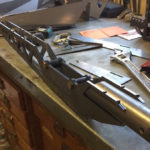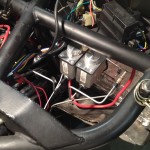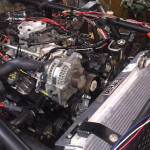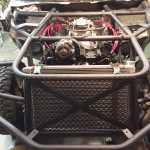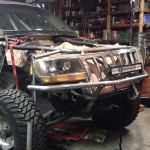
Over the years we have customized and upgraded almost every aspect of our WJ. From the TTB swap in 2012, to the custom dash in 2014, and the 5.2 swap in 2016 we have rebuilt and redesigned everything with racing in mind, except for the rear suspension. Shortly after we added TTBs up front we upgraded to a Ford 8.8 in the rear. To make it as easy as possible, we kept the lower links from our original TeraFlex 4” long arm kit and built our own upper Y-link based on the stock WJ design. As we approach our first race it is time we finally upgrade the rear suspension. It is time for trailing arms.
4-Link Suspension Design
There are two main designs for rear suspension, leaf springs and links. Since we already have a modified 3-link suspension we crossed off all of the leaf spring options and focused on designing a new 4-link suspension. The majority of rear suspension designs consist of 2 lower links and 1 to 2 upper links with shocks mounted directly to the axle. This creates a strong triangulated system with most of the pressure applied directly to a reinforced or trussed axle.
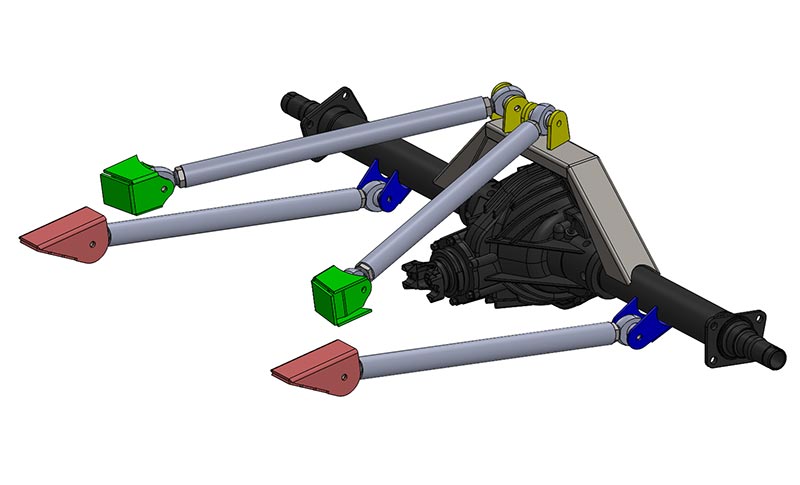
Trailing Arms
While mounting shocks directly to the axle is a simple and strong design, it has limitations. Because the shocks are mounted directly above the axle the total travel will always be limited by the size of the shock. To solve this issue, some suspension designs have the shock mounted directly to the lower link, closer to the pivot point. This allows the axle to move along a larger arc than the shock allowing for more wheel travel with smaller shocks. These types of lower links are know as trailing arms, and are the preferred design for offroad racing.

However, because the shock is experiencing the same force as the axle but traveling a shorter distance, it is experiencing a much greater pressure. This increased pressure, applied near the center of the link, would bend the DOM tubing used in a traditional 4 link system. To solve this, trailing arms are usually constructed from a combination of tube and plate to create a reinforced box design.
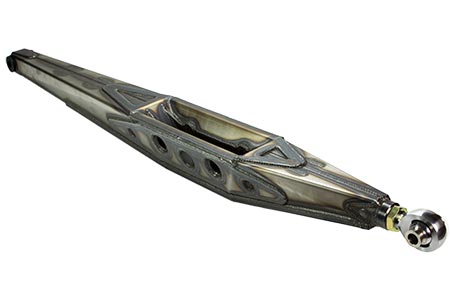
Trailing Arms for Jeepspeed
For our rear suspension, we chose to use trailing arms for the lower links and 2 separate bars mounted on top of the axle at angles back to the frame. This gives us triangulation in our rear end and eliminates the need for a panhard, or track bar.
Designing and building custom one-off trailing arms is slightly out of our scope and timeline so we needed to look into pre-fabricated solutions. There are multiple companies that make and sell fully boxed links, but these are typically designed for full sized trucks. This means that the shock mounting location would not work for our short wheelbase Jeep WJ.
The only company who sells trailing arms short enough for our application is Ruffstuff Specialties. Ruffstuff Specialties prides themselves on not settling for ‘strong enough’ and offers 4 designs for trailing arms ranging from 40” to 55” with varying weights and features. After checking out the specs on their website we found that their 48″ Trailing Arms would fit perfectly. Ruffstuff Specialties sells their links fully assembled or unwelded to fit your timeline and welding ability. We opted for the unwelded version to save on cost and let us tweak the trailing arms for our exact application.
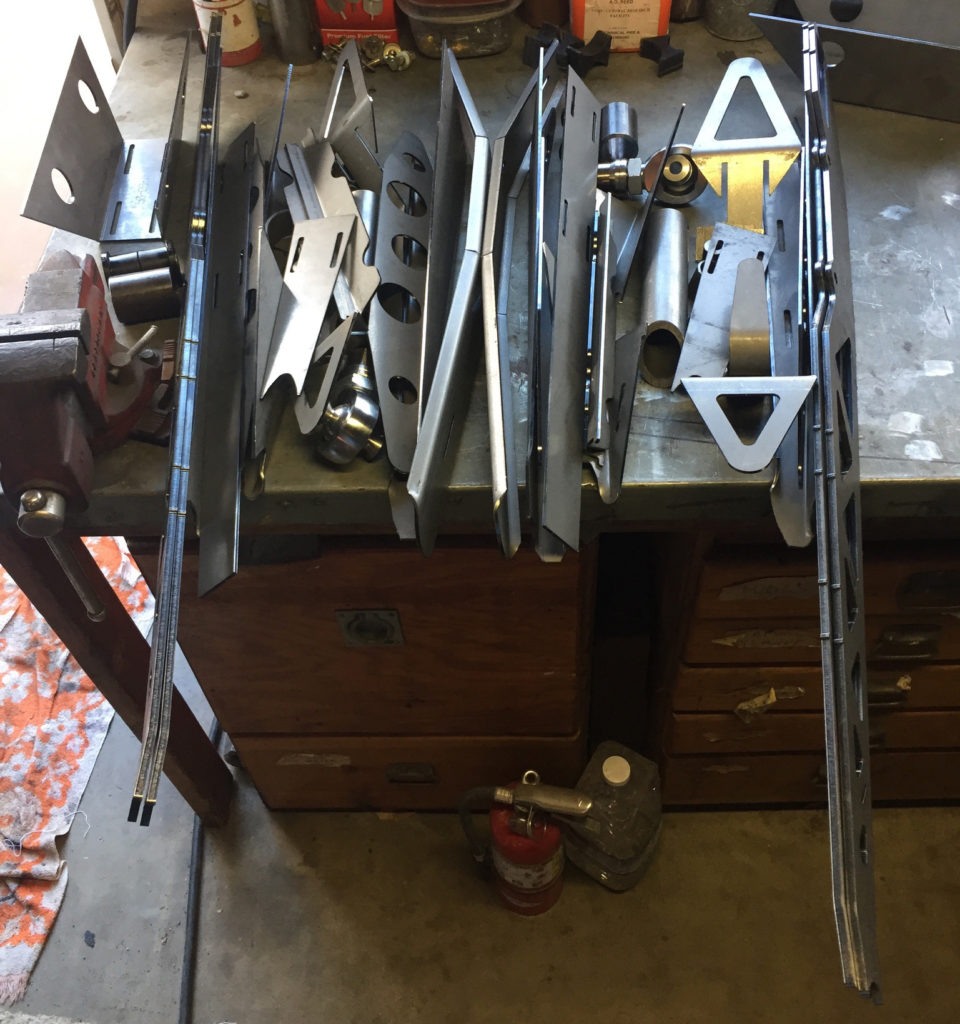
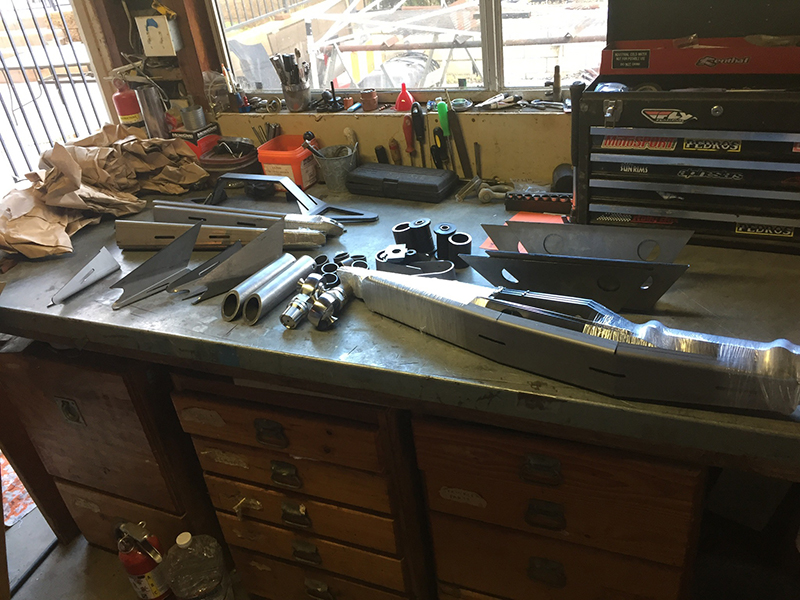
Anti Squat
When designing a custom rear suspension there are a variety of angles and numbers that need to be considered. Once you have the rough mounting locations and the amount of travel figured out, the most important number is anti squat. Upon acceleration, the rear pinion gear tends to climb the ring gear in the differential, this causes the rear end to rotate in a clockwise direction when viewed from the left side. As it rotates back, it pulls on the upper links and is sucked up under the vehicle causing the rear end to squat down a little. Having an anti squat number around 100 means the vehicle should stay level when you step on the gas.
Our current design had an anti squat of 85. This is a little high for an offroad application because we copied the stock WJ design. A lower anti squat number is typically better for an offroad vehicle. When accelerating through whoops, an axle with less anti squat can naturally compress and isn’t trying to slam down into each whoop. It also helps to lift the front of the car and allow the front tires to skip across the top of the whoops. After much design and adjustment, we settled on an anti squat of 73.
We can easily adjust this number thanks to our Ruffstuff Specialties link brackets with adjustable mounts. We ended up ordered everything for our new suspension from Ruffstuff Specialties because they stock all of the tabs and brackets we needed. Upon arrival we were really impress with their packaging. All of the small parts were sealed in bags and each bracket was wrapped individually to avoid scratching. We’ve ordered from Ruffstuff Specialties for years, and never had a damaged product. From our experience with Ruffstuff Specialties, they hold every aspect of their business to the highest standard. From customer service, to packing and shipping, to the actual products, everything is top notch
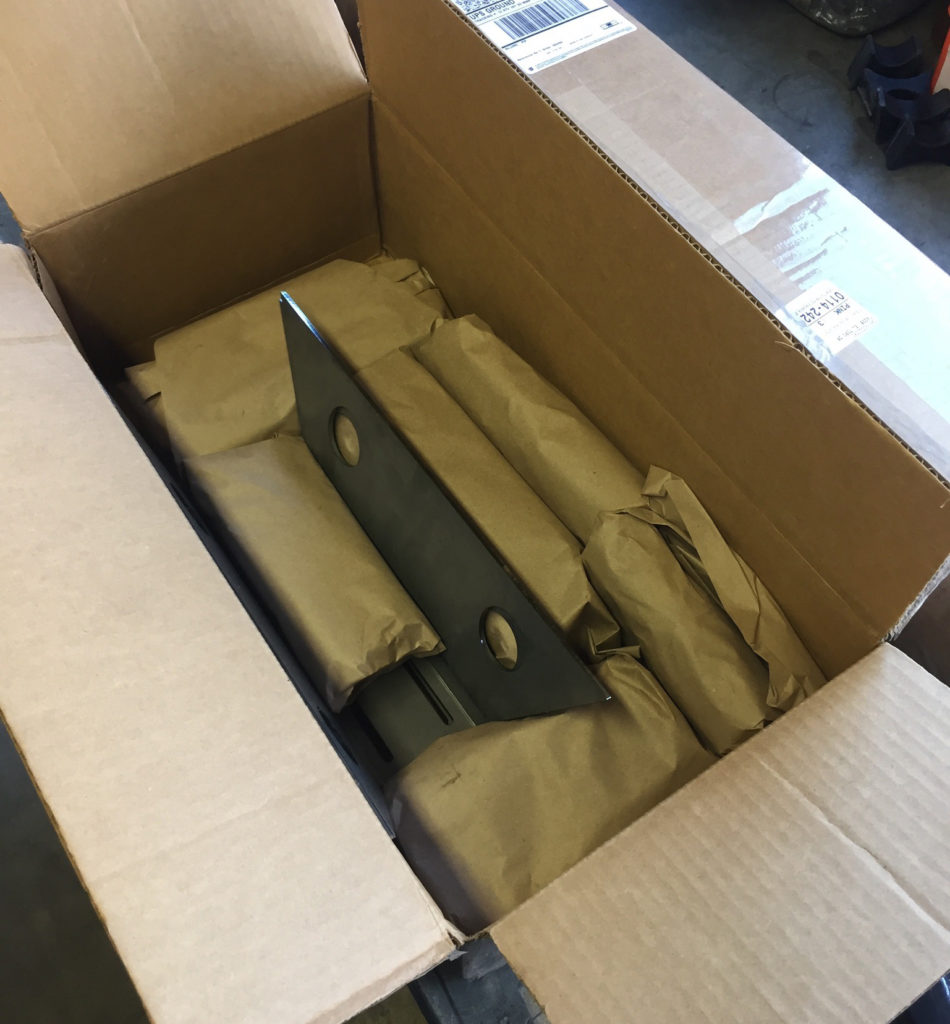
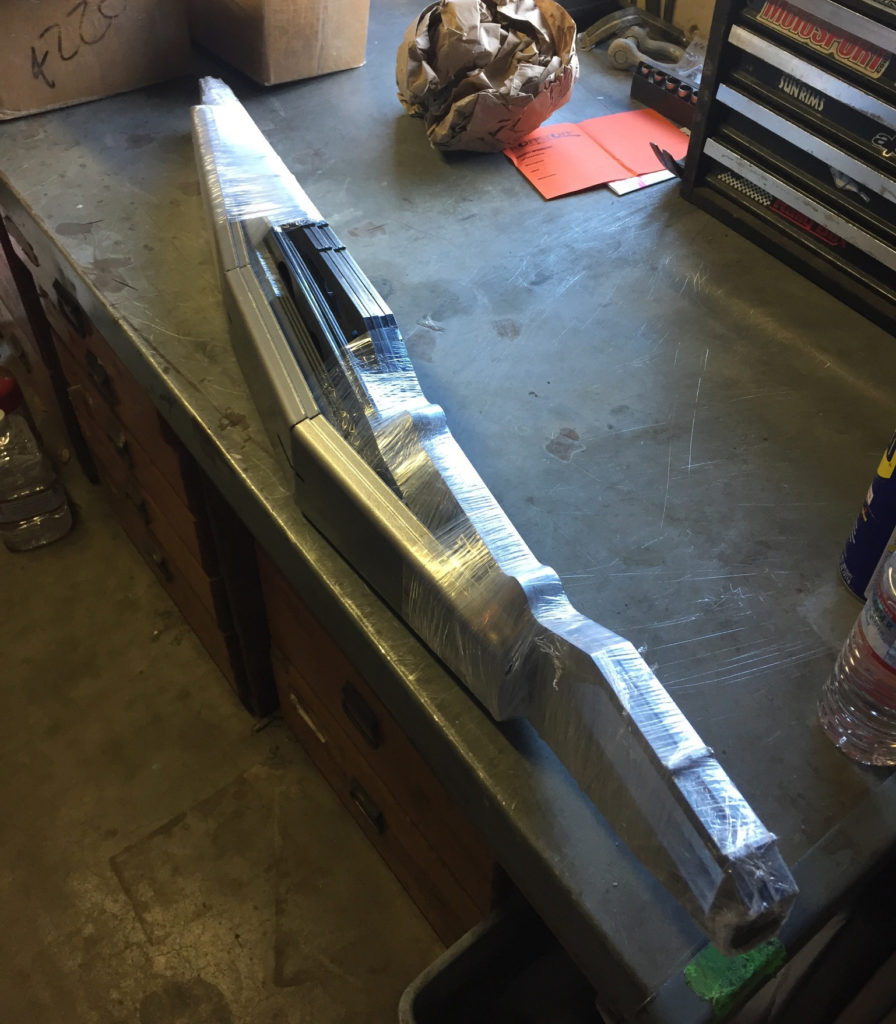
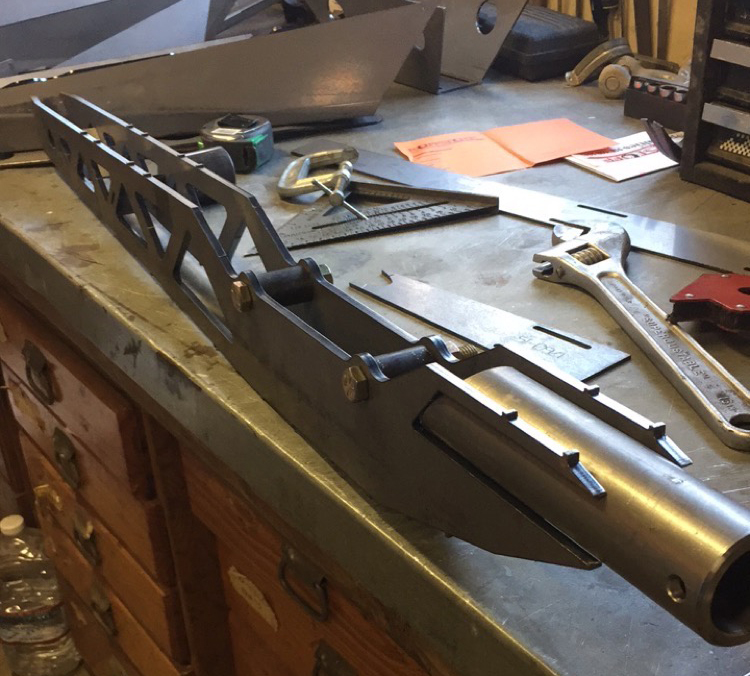
Now that we have everything we need, the next step it to assemble and weld our Ruffstuff Specialties 48″ Trailing Arms. Follow us on Instagram and like us on Facebook to see the next update.
Follow us at www.facebook.com/ThreeThirdsFabrication for updates and more stories.

